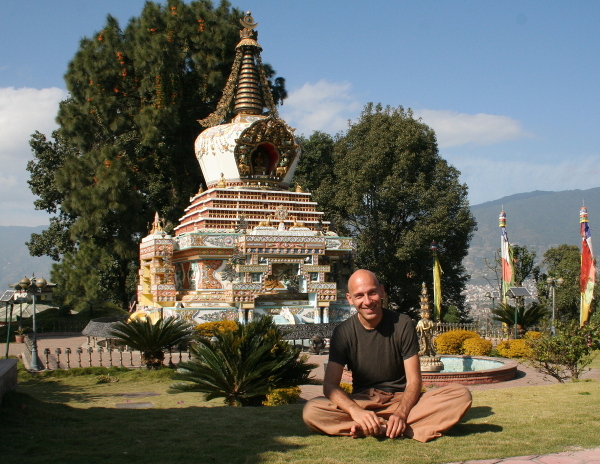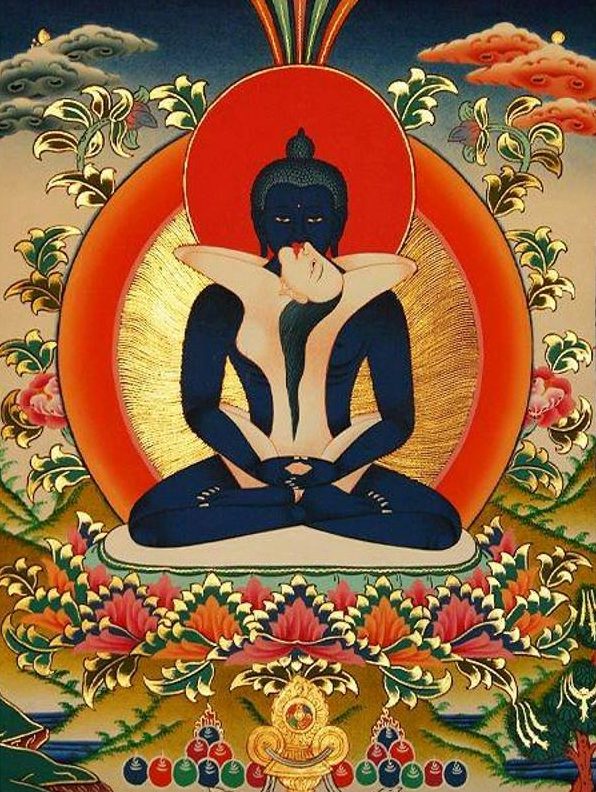Hello here is Joe
and here I will describe for you my wishes for a Thangka of Samantabhadra
cm : 105 x 80 – inch : 41″ x 31″ ( painting without silk frame )
here you se me at Kopan Monastery in 2014. Me and my partner are buddhist practitioners for 20 years.

Thangka 3 : Samantabhadra
is a very typical thangka motif. Unfortunately, all traditional representations do not please me at all. The wisdom companion of Samantabhadra Samantabhadri is always depicted very small – looks like a child. Also she puts her head so far back that she looks very unflattering – but he is good to see.
This seems to me very patriarchal and unfriendly to women.
And not only to me, Im curently reading this book from a Tibetan Master : ” The Yoga of Bliss from dr. Nida Chenagtsang ” letst take a look :
We Tibetans believe that the first Tibetan to become a Buddha through the Vajrayana, the first Tibetan person to achieve spiritual liberation was Yeshe Tsogyal. Yeshe Tsogyal practiced Dzogchen or Atiyoga as well, but the foundation of her practice was Karmamudra and it was through Karmamudra that she obtained liberation. Despite Yeshe Tsogyal’s importance, when she is not shown in sexual union with Padmasambhava as his Karmamudra partner, Yeshe Tsogyal is often represented in paintings as a much smaller figure writing down teachings off to the side of Guru Padmasambhava, who is a lot bigger. Personally, I hope that one day it will be just as common and accepted to see Buddhist centers with huge Yeshe Tsogyals and small Padmasambhavas!
se more information about thos Thangka here :

